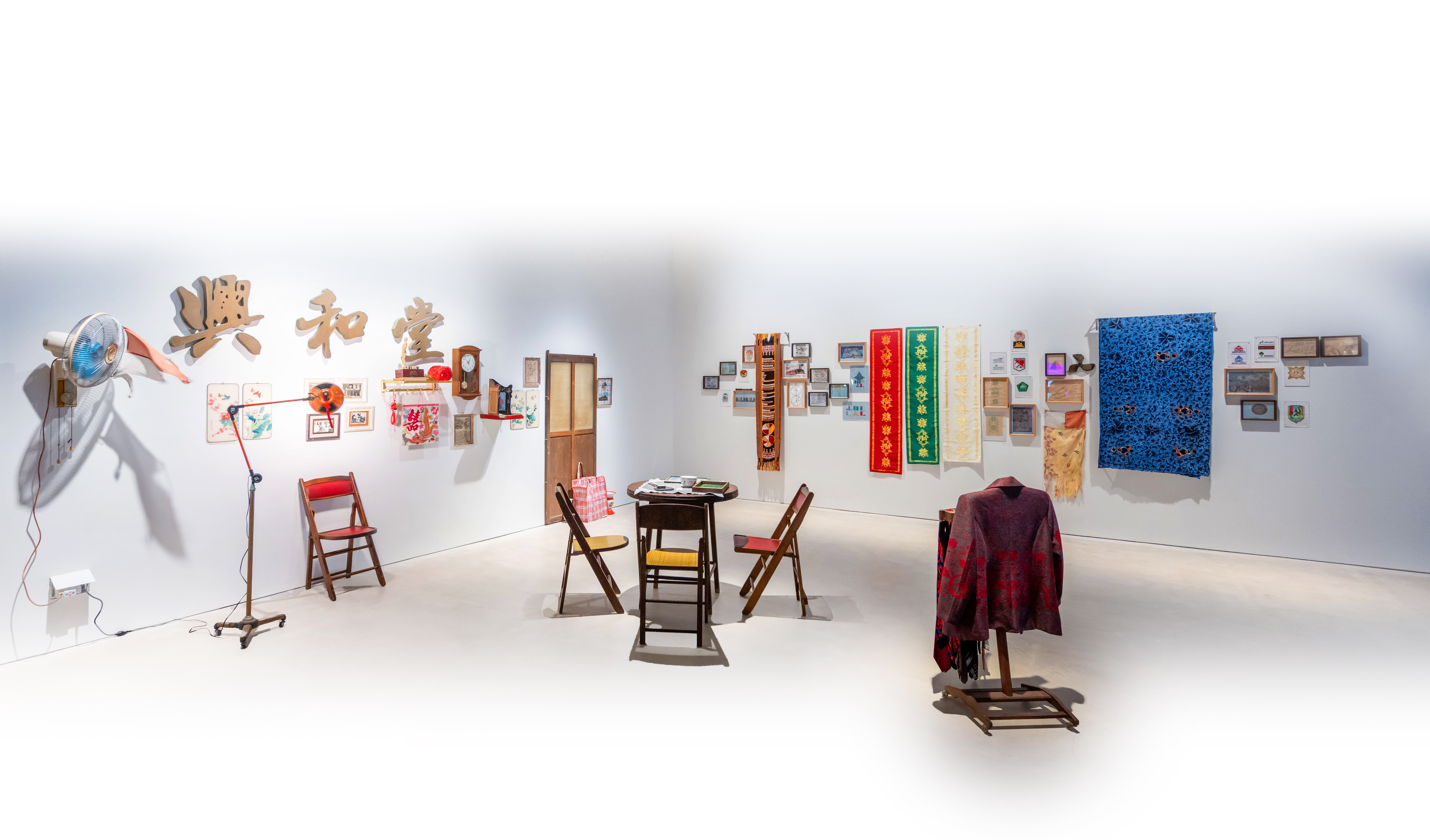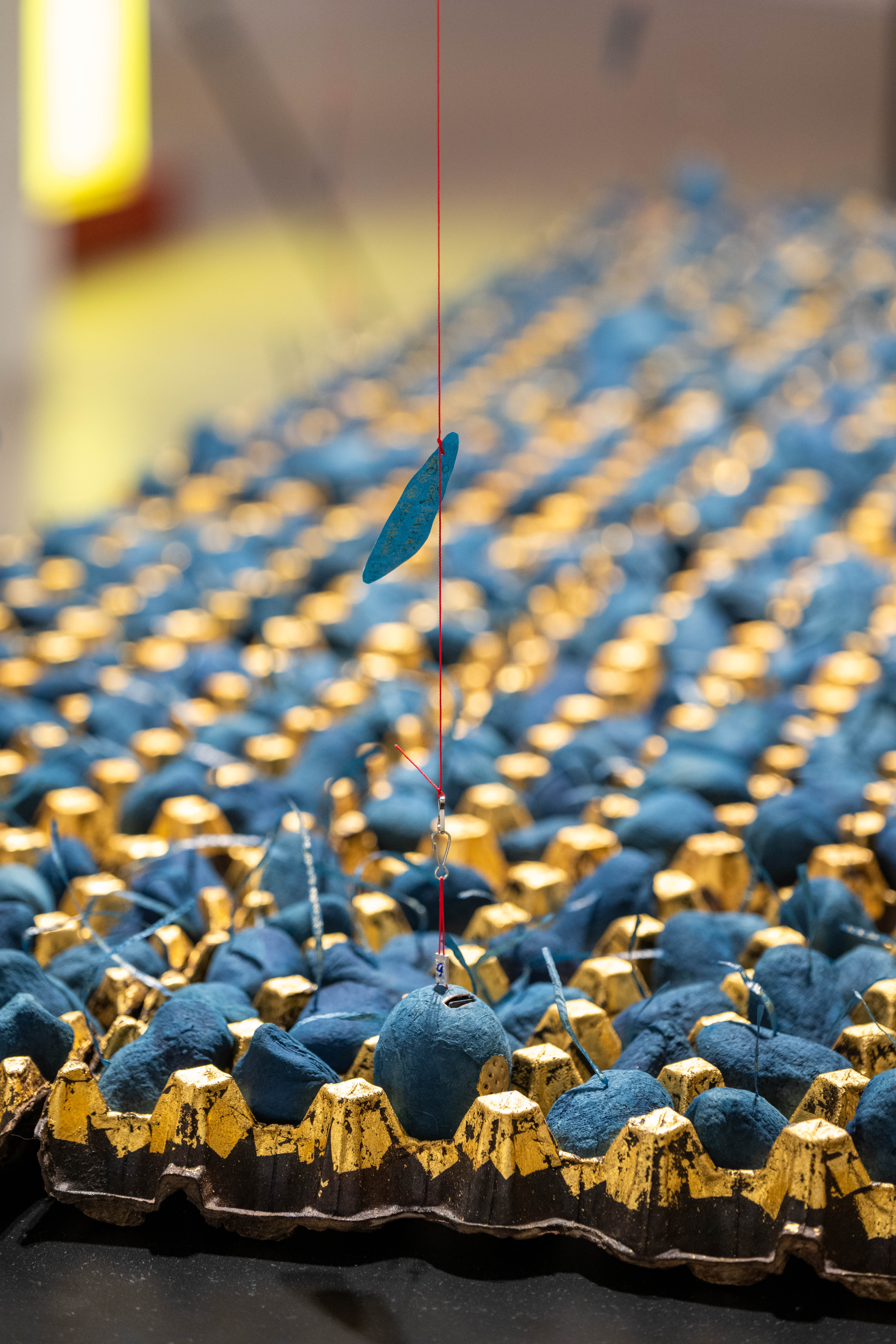
Rows and rows of indigo-dyed papier-mache eggs sit in gilded cartons. Some of these contain mini-speakers, playing recordings in which people from Taiwan and Indonesia share their thoughts on the blue dye that was often at the root of European imperialist campaigns in Asia. The installation, Indigo Market by Taiwan artist Yang Wei-lin, harks back to the Dutch colonization (1602-1949) of the Indonesian islands. The seeds of imperialism were planted around the turn of the 17th century, with the arrival of Dutch traders in Indonesia.
Delicate paper tags attached to the eggs allude to books that shine a light on the dark history of European colonies. The books include Joseph Conrad’s Heart of Darkness (1899) and P de Zeeuw J Gzn’s The Dutch in Formosa (1924) — the last one tying up the colonial histories of Yang’s native culture with that of Indonesia, where earlier this year she did a residency in order to investigate such connections.
Yang was part of a cultural exchange program involving eight artists and an arts collective from the maritime regions of the Asia-Pacific. Hosted by Hong Kong’s Centre for Heritage, Arts and Textile, the program explores how weaving and sewing can create strong ties between artists and grassroots artisans, cutting across cultural barriers.
All the new works produced as a result make use of weaving — literally or as a concept. These are now on show at CHAT’s Tsuen Wan facility, housed in a repurposed textiles factory, and will travel to the Hong-Gah Museum in Taipei, and the Langgeng Art Foundation in Yogyakarta in 2026.
Called Tidal Weavers: Islands Exchange, the exhibition is led by artistic director Ade Darmawan, a cross-disciplinary artist from Indonesia. Darmawan was resident in Hong Kong, and one of his installations, called Mnemonic, is made up of used and found household objects — a grandfather clock, piggy bank, sepia tinted photographs, traditional Chinese wall hangings with floral and butterfly motifs, a generic Hong Kong blue-and-red-striped suitcase-shaped plastic bag among other things — conjuring up memories of the city from another time.
Everyday objects are reassembled and re-contextualized in the form of what the artist calls “a living archive”. Mnemonic’s charm lies in the seeming randomness of the configuration of the objects in it.

For his second installation, Data Threads, Darmawan adopts a more methodical approach. Indonesian practitioners of indigenous weaving and dyeing styles — Gedog batik from Tuban, a metallic thread work style called songket from Sambas, and ikat, which involves resist dyeing of threads, from Maumere — were given statistical data on human mobility, demographics and environmental change as the basis for their designs for wall hangings. The results are unique and original artworks that combine data structures with traditional culture-specific motifs — Maumere’s mountains and waves, Sambas’ spiritual motif of the Eastern Star, and Tuban’s biomorphic forms.
“These motifs negotiate between cold, state-recorded data and lived knowledge in humans — mapping tensions between what is officially measured and what is collectively remembered,” explains the wall text.
Hong Kong artist Mandy Ma spent her residency at the art and culture collective Komunitas Kahe in Maumere, where she not only picked up the craft of ikat from the motherlike figures in the weavers’ community but went on to design new ikat motifs. Her contributions to the exhibition include pieces of woven fabric, with some of her original designs wrapped around a pair of rather imposing speakers, transmitting life-affirming songs sung by Komunitas Kahe members.
Yip Kai-chun, also from Hong Kong, found traces of his own Hakka heritage in Pontianak of West Kalimantan in Indonesia. His offering is a set of six light boxes showing images of “spirit mediums” dressed in elaborate costumes for a ritual parade. The idea of human beings wearing costumes with designs based on divine instruction originated in ancient Hakka culture. Hence for Yip, it could have been a case of finding a home away from home in Indonesia.
IF YOU GO
Tidal Weavers: Islands Exchange
Dates: Through Oct 26
Venue: Centre for Heritage, Arts and Textile, The Mills, 45 Pak Tin Par Street, Tsuen Wan
www.mill6chat.org


